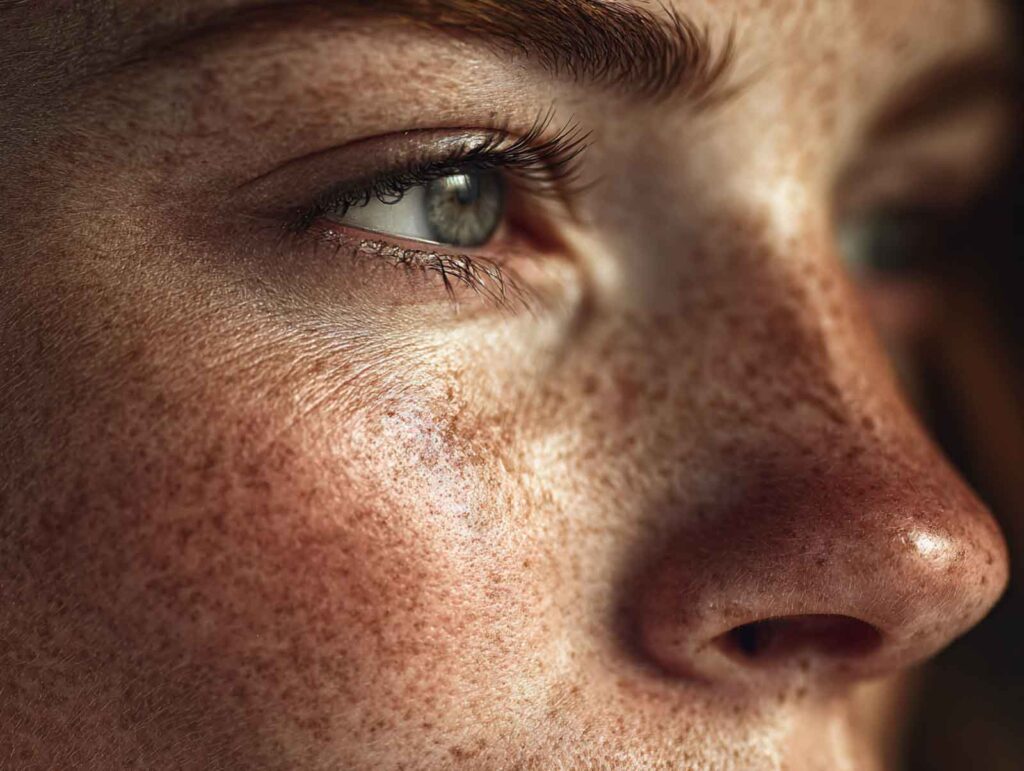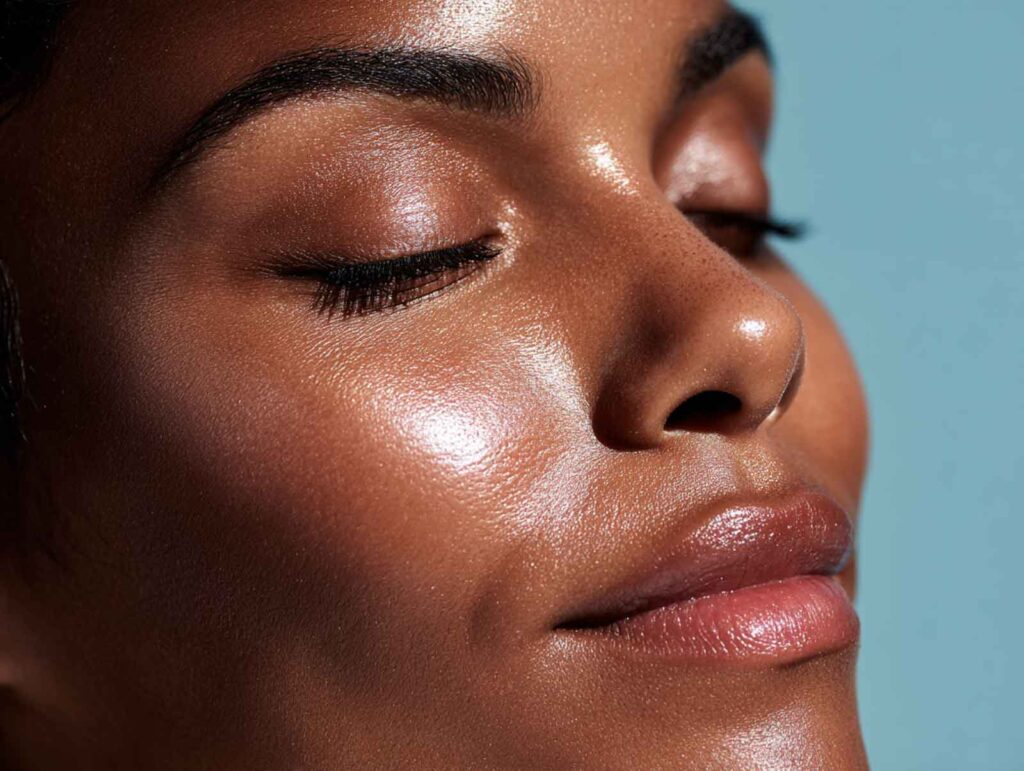Estheticians, Skincare
The Science Behind Glowing Skin Understanding Your Skin’s Needs
Every time you look in the mirror, you probably wonder how to get that radiant, healthy glow. It’s not about makeup tricks or miracle products. True radiance comes from skin that is healthy, balanced, and cared for in a way that respects its biology. As your esthetician, I want to help you understand the science behind that glow and show you how to work with your skin, so it becomes healthier and more luminous over time.
Your skin is alive and constantly changing. It responds to internal shifts like hormones, stress, and diet, as well as external factors like weather, pollution, and the products you apply. When you learn what your skin needs and how it functions, you can make smart choices that bring lasting results instead of quick fixes.
Let’s explore what’s happening beneath the surface and how you can nurture your skin so that it reflects light, feels balanced, and radiates health.
What Glowing Skin Really Means
When we talk about “glowing skin,” it isn’t about shine from oil or shimmer from makeup. True radiance happens when light reflects evenly from your skin because the surface is smooth, hydrated, and calm. Healthy skin cells sit flat, your barrier is strong, and circulation is active. That’s why freshly hydrated cheeks or the way your skin looks after a professional facial feel so luminous – it’s your skin’s natural biology at work.
The challenge is that many things that dull your glow happen before you notice them. Dehydration, barrier disruption, and subtle inflammation can be at play even when you don’t see redness or breakouts. That’s why consistent, preventive care is so important. Instead of waiting until you have problems to fix, you want to train your skin to stay balanced and strong.
Your Skin Barrier the Foundation of Radiance
The number one rule I want you to remember: protect your skin barrier. Your outermost skin layer, the stratum corneum, is like a brick wall. The dead skin cells are the bricks, and lipids are the mortar that holds everything together. When that barrier is strong, it locks in hydration and keeps out irritants.
But harsh cleansers, over-exfoliation, stress, and even the wrong skincare routine can weaken this defense. When your barrier is compromised, water escapes easily, irritants sneak in, and your skin looks dull, rough, and sensitive. That tight, dry feeling you sometimes get after cleansing isn’t a sign of “clean” skin – it’s your barrier crying for help.
To protect your glow, use a gentle, pH-balanced cleanser, follow with moisturizers that replenish lipids, and avoid scrubbing too hard or too often. If your barrier gets damaged, give it time – it can take weeks for your skin to fully restore itself. Be patient and consistent.

Hydration vs. Moisture Knowing the Difference
One of the biggest confusions I see is between hydration and moisture. They sound similar, but they’re not the same. Hydration refers to water in the skin, while moisture is the oil and lipid content that prevents that water from evaporating.
If your skin looks plump and bouncy, hydration levels are good. If it feels soft and smooth, moisture is balanced. When either one is off, your glow fades. Dehydrated skin looks flat and lined, while dry skin feels rough and flaky.
This is where ingredients make a difference. Humectants like hyaluronic acid, glycerin, and aloe attract water into your skin. Emollients like squalane, ceramides, and jojoba oil smooth and soften. Occlusives like shea butter or petrolatum create a protective layer to keep water from escaping. The best routines combine these categories to mimic what your skin does naturally.
The Role of Exfoliation in Brightness
You may think the more you exfoliate, the brighter your skin will be – but that’s not true. Over-exfoliation can damage your barrier and cause inflammation that actually dulls your glow. What you need is controlled, gentle exfoliation that helps your skin shed dead cells while still protecting the surface.
Your skin renews itself every 28 to 40 days depending on your age. When old cells stick around, they create roughness, clogged pores, and a flat appearance. Exfoliation supports the natural turnover process. Physical scrubs can help if they’re very fine and used sparingly, but chemical exfoliants like glycolic, lactic, or salicylic acid often give smoother, more even results.
How often you exfoliate depends on your skin type. Oily or congested skin may handle two or three times per week, while sensitive skin might only need once every ten days. If you feel stinging, see redness, or notice tightness after exfoliating, that’s a sign to slow down. The goal is brightness, not irritation.
Nutrition and Glow from Within
Glowing skin doesn’t just come from products – it starts with what you feed your body. If you don’t drink enough water or eat nutrient-poor foods, it will show on your skin. When you stay hydrated and eat a diet rich in antioxidants and healthy fats, your skin looks more supple, less inflamed, and noticeably smoother.
Antioxidants from colorful fruits and vegetables protect your skin cells from damage caused by free radicals, which contribute to dullness and premature aging. Vitamin C is essential for collagen production and brightening pigmentation. Vitamin E strengthens your defenses, while zinc supports healing. Omega-3 fatty acids reduce inflammation and keep your skin supple.
In fact, research shows that diets high in antioxidants are linked to improved skin quality and fewer signs of sun damage and aging. Think of your meals as part of your skincare routine – because they truly are.

Circulation and Skin Energy
Another secret to radiance is circulation. Blood flow delivers oxygen and nutrients to your skin cells. When circulation slows, your skin can look pale, tired, or sallow.
Facial massage is one of the best ways to boost circulation. Using your fingertips, a gua sha stone, or a roller can encourage lymphatic drainage, reduce puffiness, and improve tone. Clients often notice their skin looks instantly more alive after a massage because of the fresh blood flow.
Exercise also improves your glow. When your heart rate rises, your blood carries more oxygen to your skin, which is why you often see that fresh, rosy post-workout look.
Sun Protection the Glow Protector
You can do everything else right, but if you skip sunscreen, your glow won’t last. Sun damage is the fastest way to lose radiance and accelerate aging. UV rays break down collagen, cause pigmentation, and create chronic inflammation. Even on cloudy days, your skin is exposed.
That’s why sunscreen is non-negotiable. Use a broad-spectrum SPF of at least 30 every single day. Reapply if you’re outside for long periods or wearing makeup that can break it down. Preventing damage is far easier than correcting it later.
Stress, Sleep, and Skin
Stress and lack of sleep steal your glow as quickly as sun damage. When stress hormones like cortisol rise, oil production increases, collagen breaks down, and healing slows. That’s why breakouts or flare-ups often show up during stressful times.
Your skin also repairs itself at night. Blood flow increases, cells regenerate, and your barrier strengthens while you sleep. When you don’t get enough rest, your skin looks pale, tired, and dull. No product can fully replace the benefits of consistent, quality sleep.
Simple relaxation rituals, like deep breathing while applying your nighttime moisturizer, can help reduce stress. And making sleep a priority is one of the easiest and most powerful ways to maintain a natural glow.
Common Myths About Glowing Skin
There are a few myths I want to clear up. First, oily skin is not the same as glowing skin. Oil may reflect light, but it often comes with clogged pores and inflammation that dull the overall effect. Glow is about balance, not excess shine.
Another myth is that expensive products guarantee radiance. The truth is that it’s not the price tag, but the right formulations for your unique needs. A simple, consistent routine with a good cleanser, moisturizer, and sunscreen often outperforms a complex regimen that disrupts your barrier.
And finally, instant results don’t equal lasting glow. Some harsh treatments can make your skin look brighter for a day or two, but if they damage your barrier, the radiance quickly fades. Sustainable glow always comes from respecting your skin’s natural biology.
Building a Routine That Supports Glow
When you’re building your routine, think about three main pillars: cleanse, nourish, and protect. These basics keep your barrier strong, hydration locked in, and stressors minimized.
In the morning, use a gentle cleanse, follow with a hydrating serum, layer on moisturizer, and finish with sunscreen. At night, focus on cleansing thoroughly, applying any treatment serums or exfoliants, and sealing it all in with a barrier-supporting moisturizer.
Stick with products long enough to see results. It usually takes four to six weeks for your skin to adjust. Consistency is the real secret behind a lasting glow.

FAQs About Glowing Skin
Why does my skin still look dull even though I use good products?
Dullness can come from dehydration, lack of exfoliation, or barrier damage. You also want to check internal factors like diet, stress, and sleep.
Can facials really make my skin glow long-term?
Yes, but only if you maintain a routine at home. Professional treatments boost your results, but daily care sustains them.
Do natural remedies like honey masks really help with glow?
They can support hydration and soothing, but they aren’t a complete solution. Use them as a supplement, not a replacement for a solid routine.
How long will it take to see results after I change my routine?
Give it four to eight weeks. Skin cycles take time, so patience pays off.
Is glowing skin possible at any age?
Absolutely. While texture and firmness shift with age, skin can always look vibrant, smooth, and healthy when cared for properly.
Bringing It All Together
Your glow isn’t about chasing perfection – it’s about nurturing vitality. When you focus on protecting your barrier, staying hydrated, exfoliating wisely, feeding your skin with the right nutrients, improving circulation, protecting yourself from the sun, and managing stress and sleep, your skin naturally reflects health and energy.
The glow you want is simply the visible sign that your skin is balanced, resilient, and supported. And when you respect your skin’s needs, that radiance will always follow.





